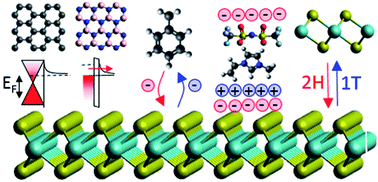Charge carrier injection and transport engineering in two-dimensional transition metal dichalcogenides
Abstract
Ever since two dimensional-transition (2D) metal dichalcogenides (TMDs) were discovered, their fascinating electronic properties have attracted a great deal of attention for harnessing them as critical components in novel electronic devices. 2D-TMDs endowed with an atomically thin structure, dangling bond-free nature, electrostatic integrity, and tunable wide band gaps enable low power consumption, low leakage, ambipolar transport, high mobility, superconductivity, robustness against short channel effects and tunneling in highly scaled devices. However, the progress of 2D-TMDs has been hampered by severe charge transport issues arising from undesired phenomena occurring at the surfaces and interfaces. Therefore, this review provides three distinct engineering strategies embodied with distinct innovative approaches to optimize both carrier injection and transport. First, contact engineering involves 2D-metal contacts and tunneling interlayers to overcome metal-induced interface states and the Fermi level pinning effect caused by low vacancy energy formation. Second, dielectric engineering covers high-k dielectrics, ionic liquids or 2D-insulators to screen scattering centers caused by carrier traps, imperfections and rough substrates, to finely tune the Fermi level across the band gap, and to provide dangling bond-free media. Third, material engineering focuses on charge transfer via substitutional, chemical and plasma doping to precisely modulate the carrier concentration and to passivate defects while preserving material integrity. Finally, we provide an outlook of the conceptual and technical achievements in 2D-TMDs to give a prospective view of the future development of highly scaled nanoelectronic devices.



 Please wait while we load your content...
Please wait while we load your content...